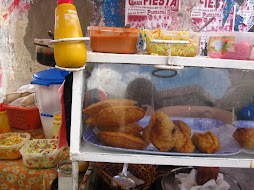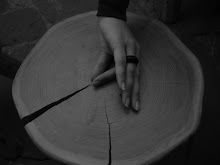Our trip to Potosí may have been my most serious/though-provoking experience so far in Bolivia. We read about it in school, occasionally hear about it in the news (maybe), and are told by all other travelers to go, but being there is another world!
Potosí is considered the highest city in the world (1,400 feet) and was at one point the richest city in the world (but very obviously not anymore).
So, here's the story:
In the 1540s Conquistadores discovered for themselves the silver in Cerro Rico, the hill looming above the city of Potosí. They wasted no time in the mining process or the exploitation of indigenous and African-slaves, nor did they waste time in sending the riches back to Europe. Very little of the estimated 137 million pounds of silver extracted from the Cerro remained in Bolivia; and it is also estimated that in 300 years, 8 million workers died in the mines. In the 1800s the depleting silver resources led to mining for inexpensive tin and minerals, and to the decline of Potosí.
The nickname, “The Mountain that Eats Men” leaves little room for interpretation of the current working conditions. The tour we took is considered to be very non-touristy and more of the real deal, and our guides were former miners. We first saw a small plant where they extract some of the metals, using techniques and materials that made all of us cringe. Then we headed up the Cerro to the functioning Candelaria Mine in our boots, headlamps, bandannas, and other gear, to start out several-hour journey in the mines. There are still about 8,000 miners working today, ranging from 10 to 70 years old, and all with a life expectancy of about 40 years. If they don't die from silicosis, accidents are still very common... The workers say in the mine for up to 24-hour shifts, and seem to live almost exclusively on coca leaves (we took them gifts of drinks, coca, and dynamite- but not alcohol or cigarettes!).
About five minutes into the mine we were told to turn around and run, and then jumped up to a niche in the side, to avoid a cart (without brakes) coming out on the tracks. From there we continued on, meeting workers along the way and seeing the different steps of the process. It's hard to describe exactly what the inside of the mine is like, so imagine that everything is much worse than I explain it to be: we went up and down spinning ladders, steep and slippery vertical tunnels, and very narrow passages, avoided touching any of the pipes that were said to be “dangerous”-although we didn't know why, sweated and froze depending on where we were in the mine, and always left our bandannas on to avoid breathing in the thick dust.
It was an incredible experience, and one I don't really desire to re-live, although I want to meet more of the miners, as some of them were incredible people. I do partly credit our survival to the “Tio.” “Tio” is literally “the devil,” and each mine has one. He is believed to be responsible for accidents, etc. in the mine and offerings of coca, alcohol, and cigarettes are made to ask him for protection.
Please take the time to watch this documentary and take a look for yourself (the mine we went to is very similar to this one):
http://www.thedevilsminer.com
Sunday, December 27, 2009
Subscribe to:
Post Comments (Atom)











1 comment:
Sounds like quite an experience. Cherri says she is glad that the mountain does not eat pretty young women from Colorado!
Post a Comment